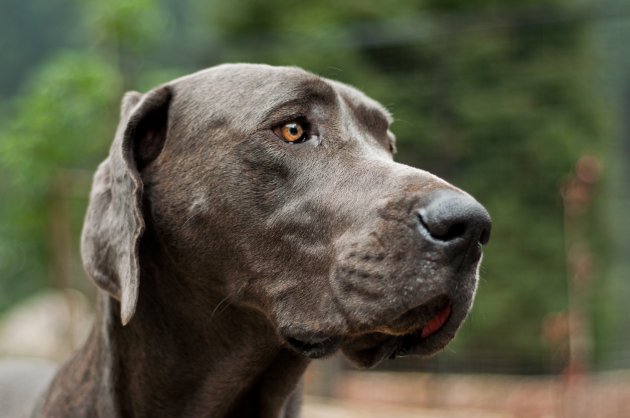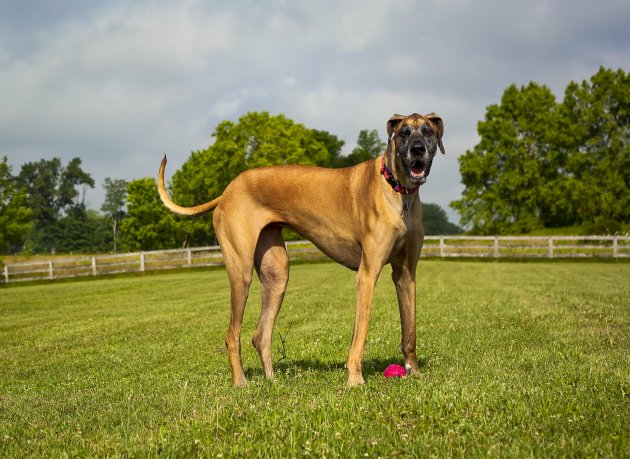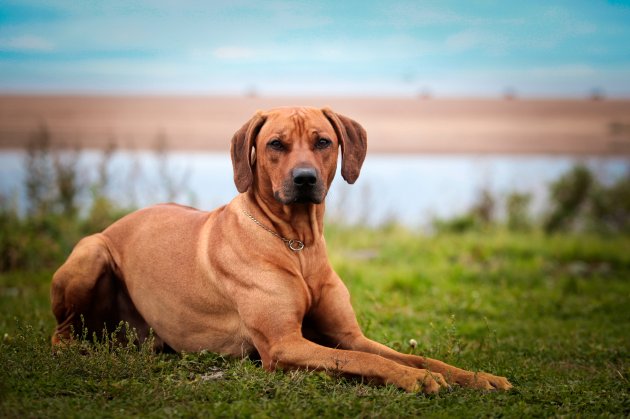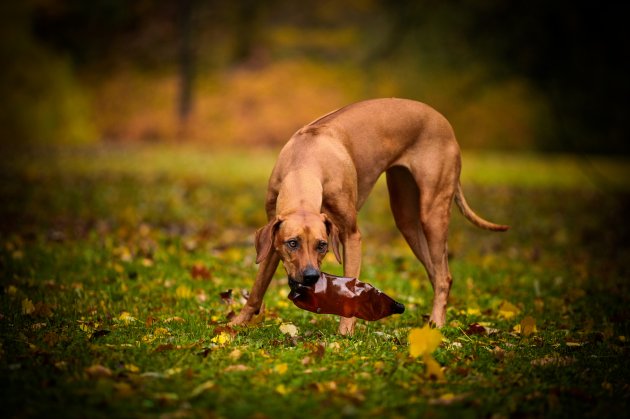As a 90s kid, I grew up watching Scooby-Doo while eating a bowl of Cap’n Crunch. Scooby-Doo was among my favorite cartoon characters, but I never cared to know what breed he was. Nor did I even realize that dogs were distinguished by their race. Back then, all I needed to know was that a dog — be it silky smooth or cloud-like fluffy, small or extra-large — is worth all the love in the world! Now that I am a pet writer and fur-momma, let me share with you 13 facts I learned about Great Danes!

13 Facts About Great Danes You Might Not Know
1. Great Danes Had Nothing to Do with Denmark
You may think these dogs hail from Denmark, but they do not. During the 16th century, English breeders crossed English Mastiffs, Greyhounds, and Irish Wolfhounds to create robust, long-legged canines for hunting. These vicious hunters were in demand among the nobility across Europe. Despite contrasting sizes and phenotypes, all of these hybrids were called “English Dogge,” which translates to English Dog.
2. The Great Dane Is Germany’s National Dog
Two centuries later, German breeders further developed the hybrids with the Molossian hound and the Suliot dog, among other ancient Greek canines. In 1876, a committee in Berlin changed the name from “English Dogge” to “Deutsche Dogge,” which means German Dog. The Great Dane we know and love today is Germany’s National Dog.
3. Great Danes Had Many Name Changes
Germany has banned all other names. But because of the increasing tension between Germany and other countries during the World War, “Great Dane” became the preferred term for the breed. The name was coined by French encyclopedist Georges-Louis Leclerc, Comte de Buffon. He encountered the early version of the race during his travels in Denmark way back in the 17th century.

4. They Are Colossal Boar Hunters
The Great Dane was initially employed as a boar hunting dog. He possesses the size of the Mastiff, the height of the Irish Wolfhound, and the agility of the Greyhound. Their ears were always cropped to prevent injury while hunting. Nowadays, it is mostly a choice whether or not you prefer the cropped look. Many show dogs you see will sport the cropped ears.
5. From Boar Hunting to Tea Parties
Boar hunting is an obsolete doggie mission. If the modern-day Great Dane is not competing in agility sports or dog shows, he is hosting tea parties with children. Great Danes are gentle, friendly, and patient. That is why they get along well with children and other pets to boot. But because they are oblivious of their size, it is wise not to leave your gentle giant with your tiny tot.
6. A Big Breed Has a Big Need
Of course, this goes without saying that a colossal canine will also need tons of food. You are looking at seven to nine cups of quality dog food a day. Not to mention, your heavy-weight pooch needs an orthopedic dog bed, which ranges between $200 to $400. With that giant frame, your pooch must sleep on a comfy bed with orthopedic benefits. On the bright side, they don’t require frequent trips to the groomer. Occasional baths and hours of relaxing massage will do!

7. European Great Dane vs. American Great Dane
Nowadays, the noble breed has been divided into two types: the European Great Dane and the American Great Dane. Although these majestic beasts originated in Europe, their race is at gunpoint, as many clubs in Europe are now in favor of the new Pseudo-Dane or the “hyper type.” Even judges under the auspices of the FCI are promoting the deviation.
The following are distinctive characteristics of a European Great Dane:
- Broad, thick snout
- Longer and thicker lips
- Rounded chest
- Heavier body
American Great Danes, on the other hand, are consistent with the blueprint set by the American Kennel Club and the Fédération Cynologique Internationale. Take note: There is only one standard and, therefore, only one correct type of Great Dane.
The following are distinctive characteristics of an American Great Dane:
- Slender snout
- Has a more delicate bone structure
- Rectangular head
- Weighs less
8. Record Holders
According to the Guinness World Records, the tallest dog is a Great Dane named Freddy from Leigh-on-Sea, Essex, UK. Freddy stood over 7 feet tall when standing on his hind legs, snatching the title from Zeus, the previous record holder. Zeus was the fur-baby of Denise and Kevin Doorlag from Otsego, Michigan, USA. Unfortunately, the canine Olympian crossed the rainbow bridge on September 3, 2014. We also have Gibson, Gorge, and Titan — all of which are Great Danes. Although the tallest dogs are indeed Great Danes, the tallest breed is the Irish Wolfhound.
9. Who You Gonna Call? Ghostbusters!
The original ghostbusters were the Great Danes of the Dark Ages. People used to believe Great Danes could ward off evil creatures, such as phantoms and ghouls. That is why their owners would allow them to roam around at night. So, I guess this is why Shaggy and Scooby always find the “ghost” first before the rest of those meddling kids.

10. Danes Are Great Family Members
Imagine a dog, who is 34 inches tall and weighs 200 pounds, racing towards you like a mad cheetah. It is a frightening sight, isn’t it? Not when it is your dog! Despite their size, these hulking canines are humble, affectionate, and sometimes downright silly.
Another factor that makes Danes great is their eagerness to please their pet parents. They also bond closely with other family members, instead of competing against them.
11. Stinky Farts and Drool Galore
These canines will drool while sleeping, playing, eating, and when checking your grocery bag for tasty goodies. Likewise, these guys fart so bad! At least you have a new scapegoat for your gas bombs, right?
12. They Can Also Be the Biggest Laziest, Couch Potatoes
Great Danes are born to be boar hunters. Their massive stride and sturdy build allow them to sprint incredibly fast and catch their prey with great finesse. So, who would have thought they could also be giant couch potatoes? Although these physical traits still remain in the modern breed, Great Danes have low exercise requirements and prefer to catch Z’s on their bed. In fact, a Great Dane can sleep 14 to 16 hours a day.
13. Great Danes Have One Fault
Sadly, these incredible companions are short-lived. Great Danes often suffer from enlargement of the heart, as well as joint and bone diseases. Great Danes can give you eight to ten years full of sunshine. Some can only live for seven years, and a few lucky ones can reach the age of 12.
Bottomline
The Great Dane is a dog of a perfect balance between power and elegance. This breed does not have the heaviness of the Mastiff, nor the lankiness reminiscent of the Greyhound. Instead, this majestic beast holds the middle ground between either extreme.
Their giant size may come with its own list of challenges, but their big hearts and over-the-top personalities will always leave you begging for more! When it is finally time for them to cross the rainbow bridge, they always leave a hole in your heart as big as they are…
Further reading and references:
- Joe Stahlkuppe. (2012). Great Danes (Barron's Pet Owner's Manuals). Retrieved from amazon.com
- Janice Biniok. (2011). Great Dane (Breedlover's Guide). Retrieved from amazon.com
- Great Dane Club of America
- Great Dane FCI-Standard